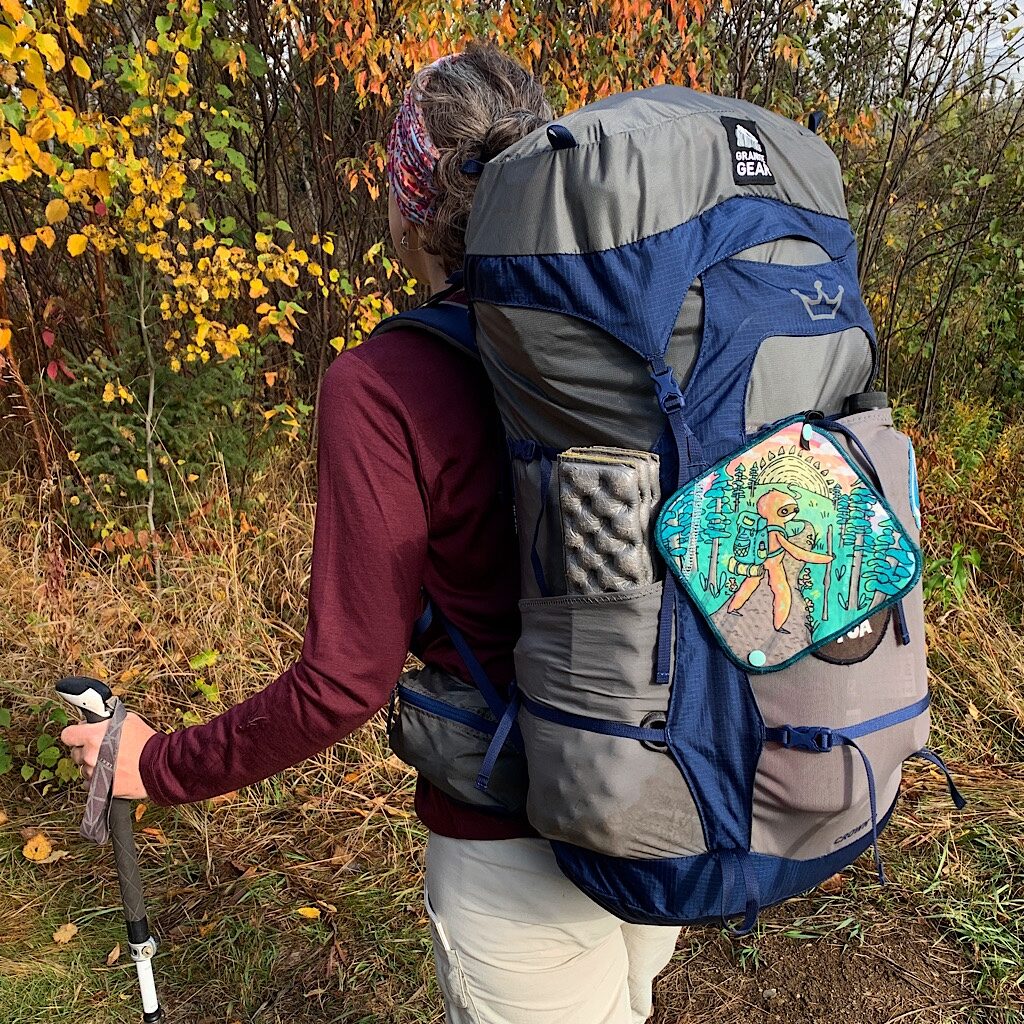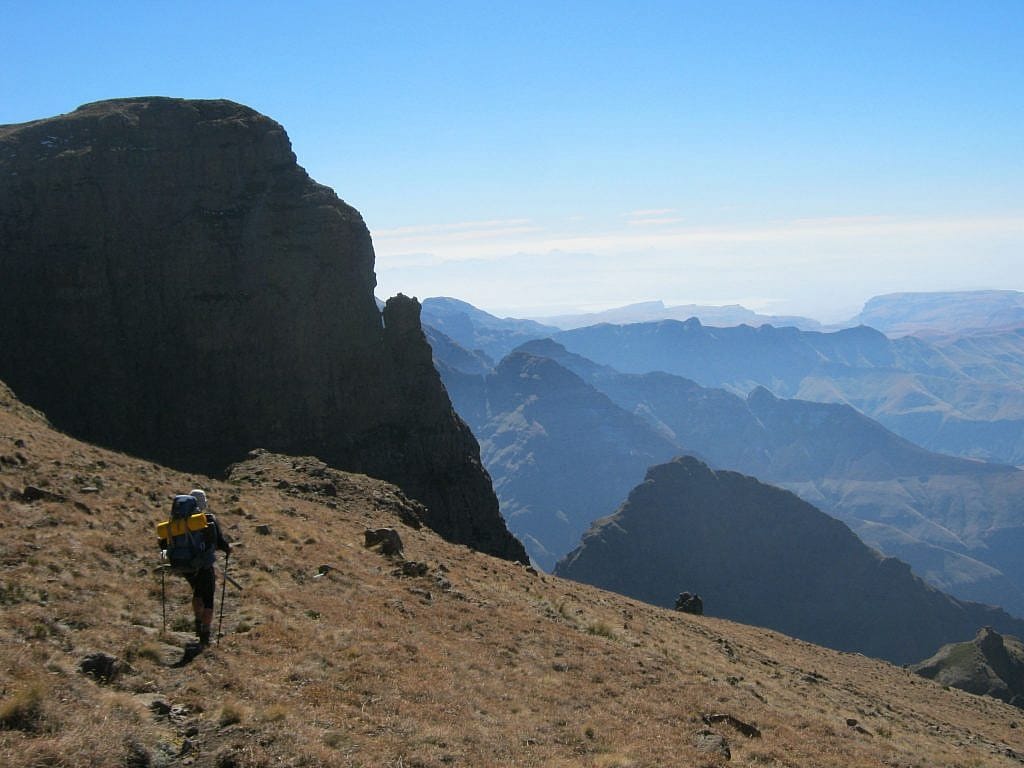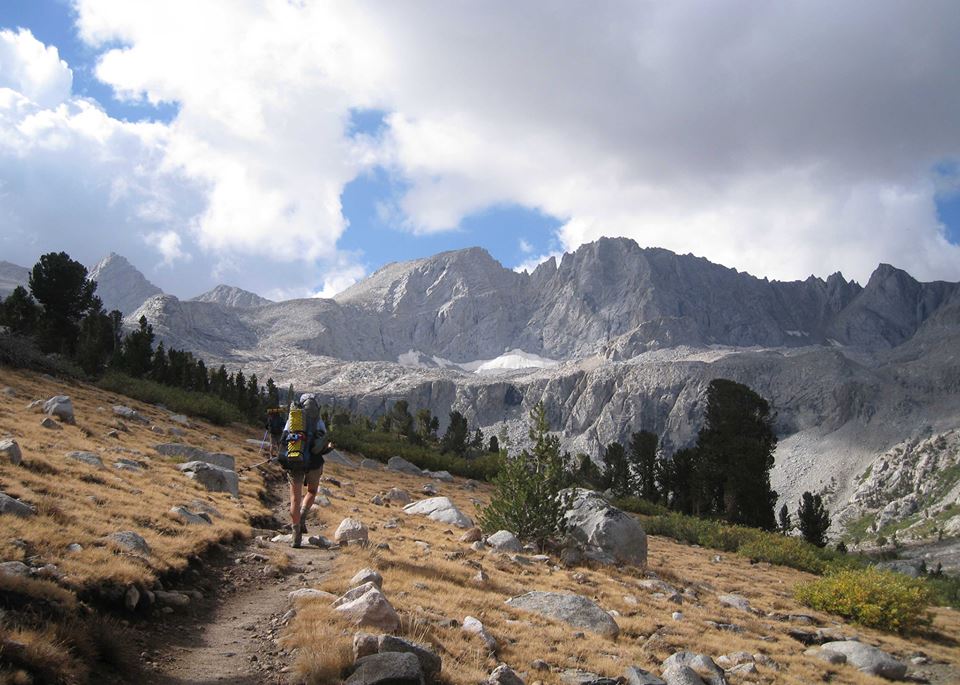
Maggie D asked: How do you secure your bag when checking it at the airport?
Over the years, I’ve been concerned about checking my backpack. Mainly, this is because of all the straps on the pack that could get tangled and damaged in the machinery. Also, because the pack is soft-side, my poles and essential gear are vulnerable. So I’ve taken to buying a throwaway suitcase at a thrift store to pack everything and then check it worry-free.
Of course, this doesn’t ensure my bag will make it to my destination and there’s always the problem of what to do with the throwaway bag once I get there! Still, it’s worked beautifully on many trips, including internationally where I often have a lot of connections.
One tip is to take as much as possible onboard, especially items that could be tricky (and expensive) to replace like your tent, sleeping bag and clothing. Also, never check lithium batteries. They pose a safety risk and have been known to (rarely) burst into flames. I forgot this step one time and TSA confiscated my battery.
Ellen S (and a few others) asked: Do you pack hiking poles on international trips or buy when you get there?
When I returned home from Jackson, Wyoming after walking the Teton Crest Trail, I carefully cinched up my backpack planning to carry everything on board. TSA took one look at the X-Ray and made me check my trekking poles, which ended up costing me an extra $35.
Since 9/11, trying to carry trekking poles on the airplane has been a challenge. The TSA (Transportation Security Administration) prohibits hiking poles in carry on.
But there is a caveat. On their website, they state: The TSA will allow a walking cane or walking stick and other devices like walking chairs required for personal use and safety on an airplane. Your cane still has to fit within the airlines size limits for carry-on bags if you are packing the cane in a carry-on bag.
Two things would need to happen – one, you’d have to prove that you need the hiking poles for personal safety while on board and they would need to be inspected, “to ensure that prohibited items are not concealed.” They go on to state that the final decision rests with the TSA officer on whether an item is allowed through the checkpoint.
So this brings me back to my throwaway suitcase. I’ve checked my own hiking poles through to South America, Europe, Africa, Asia and New Zealand without a problem. Depending on where I’m going, it might be possible to purchase walking sticks, but since there’s no charge normally to check bags on international flights, it doesn’t make sense to buy them when I land.
Still, I take a fatalistic approach that my bag may not meet me at the trail head, so again my tip is to take as much on board as possible – and maybe TSA will let you take your poles!
Eric J had more questions about my hiking poles: How do you choose when to use rubber tips on your trekking poles?
I don’t normally use rubber tips on my hiking poles unless I know I’ll have a long road walk. I notice that a lot of English and Scottish hikers use them regularly. When I thru-hiked the Drakensberg escarpment in South Africa, they were conducting controlled burns. My partner is English and the tips on his sticks melted right off on the hot earth! (our shoes, surprisingly, were just fine…)
On a more sober note, my friend, the ultra-marathoner Gabe Joyes, had a serious accident last season tripping and landing full force on the business end of his pole, which punctured 1 1/2 inches into his thigh. He survived (barely) and recommends, at least while trail running, using protective tips on poles to avoid what he went through.

David J asked: How do you take care of contact lenses on trail?
The glib answer is to not wear contact lenses! I was severely myopic for most of my life and wore contacts on many trips. The hassle to keep things clean and my eyes free of infection convinced me to get Lasik about a dozen years ago. It was the best thing I’ve ever done as there’s nothing like cowgirl camping and seeing the stars overhead without glasses.
Lasik may not be an option for you for numerous reasons, so I suggest using extended-wear lenses that can be worn continuously for about a week at a time. It’s less likely that you’ll lose a lens you can wear over many days fumbling around without a mirror, though even with extended wear, it’s advised you take them out at night. Still, you’ll need drops and clean hands to manage contacts. Some people take hand sanitizer or pre-moistened wipies along in case they dry camp (without access to water)
In my pre-Lasik days, I took an extra pair of contacts with me – plus two pairs of glasses in case I crunched a pair. Depending on your vision, if you can’t see without lenses, consider the risks of being able to hike without them. I was successful wearing contacts even in Pakistan, but extremely careful to avoid getting anything in my eyes during wind storms. I always took my contacts out and put them in over a towel in my tent so I could easily find them if (when) they dropped out of my fingers.
Merry-Anne R asked: How do you know so many bird names, plant names and tree names as you hike?
I try to learn as much as I can about the flora and fauna of a place I’ll walk before getting on trail. That being said, I use the free Merlin Bird ID app from Cornell Lab as well as PlantNet. In Arizona I took along a fold-up flower identifier. Oftentimes, trail descriptions and local signage provide tons of information about local history and geology.
I write about what I learn as well as include relevant information in my talks because all of this fascinates me. That is not true for all hikers. When I came upon a short spur to a 1,000 year old Rimu on the Queen Charlotte Track section of New Zealand’s Te Araroa, no one was interested in joining me to see this marvelous tree because it might slow their forward progress on trail. <sigh>
one more from Merry-Anne: How do you keep all your pictures straight in your mind and know what is out there in the woods, country, mountains, etc?
Early on I learned that the only way to keep track of my experiences was to actually write as I go. I use the Notes app on my iPhone to jot down thoughts throughout the day – including flora and fauna! At night in my tent I use my notes to write a narrative of the day and pair that with choosing the best pictures of the day which I place in a separate folder.
The reason I’m disciplined this way is that I’m human and I forget what happened, sometimes even that morning! For instance, people say interesting things, I might see an animal or am taken with a particular feel to the light or air, I might find one section really hard and another easy. I like to bring all of that together in words, but most importantly, show the story through photos.
To manage my on-trail work, I purchased an iPhone with as much memory as I could afford so that I never have a problem with storage. There’s nothing worse then having to throw out photos on trail to make room for more!

Frank V. asked: No experience with long distance hiking. How did you prepare, to be sure you will make it?
That’s a great question with the simple answer being by getting experience! I have interviewed thru-hikers over the years who told me they had zero experience before starting. Trust me, they learned as they went with some of those lessons not being easy ones. Still, most hikers go out on a “shakedown” practice hike to test their gear and stamina.
I began backpacking solo in my 20s for short distances and on trails that had good exit points. My first thru-hike where I needed to send a resupply box was the John Muir Trail. There was a steep learning curve to manage a trail of that difficulty and length as well as figure out how to manage food. But I built up confidence and got a better idea of what I could handle physically as well as how to plan for success.
Here are a few “rules of thumb:”
- Study your maps for elevation gain/loss as well as trail tread. This will give you a better idea of how many miles you can realistically walk.
- Study average conditions for the area you are hiking. This ensures you take the right gear for rain, cold, heat, bugs, etc.
- Read other trip reports to get an idea of how people managed the hike. This helps give you a general idea of how long it will take as well as where you might want to take breaks, camp, get water, etc.
- All of us have a tendency to “pack our fears” and take too much. That being said, don’t expect that you’ll be an ultralight hiker the first time out. UL gear is very expensive for starters and carrying less requires more skills, ones that you will build over time.
- On trail, start with low mileage to get into the rhythm of hiking, to get your “trail legs.” I admit that am not good at this!
- Plan a trip with a friend rather than start out as a solo hiker. Being alone raises the risk level exponentially and having a buddy can make things easier, especially on a first trip, and more likely to be successful.
- Remember that successfully completing a hike is only part of the joy. Factors outside your control – like horrific rain in Scotland! – usually have the last word. It’s being flexible and able to change plans, perhaps give up a portion of trail or simply enjoy as much as you can do that will make the hike memorable.
Feel free to contact me anytime with your burning backpacking questions! I still have questions myself as gear and food and hiking style evolve.


2 Responses
Nice comments for Frank V’s question. I would add be sure to make trail notes, e.g. times, conditions, etc.
yes! great addition to the list. Thanks